On September 22, a trim motor failure resulted in erratic movements of the trim wheel on a Hawaiian Air A330 that was performing flight HA3 from Los Angeles to Honolulu. Aviation Herald and others reported the incident. In total, this makes 14 recent Hawaii-related flight diversions since mid-summer.
Let’s revisit that first sentence again and what it means. We invite the pilots who follow Beat Of Hawaii to add their comments too. On some planes, the trim wheel is moved manually and can raise the nose of the plane up or down. Once that’s set, it will hold the yoke in place, which is helpful at times like when the aircraft is climbing.
On the Airbus A330, there is an auto-trim setting. As soon as the weights and center of gravity position are inserted into the flight management computer, a motor causes the trim wheel to turn automatically to the correct settings for takeoff and during flight.
“Trim Systems are considered to be a secondary flight control system. Aircraft “trim” is the adjustment of aerodynamic forces on the control surfaces so that the aircraft maintains the set attitude without any control input.”
Following take off from LAX, the trim wheel began to move erratically, which could cause the nose to be unstable. To resolve the situation, the flight crew disengaged the autopilot, worked through the appropriate checklists, and then decided to divert back to LAX. The plane departed LAX at 9:58 am and returned back to the same airport at 11:43 am. The plane was out of service at LAX for two days following the incident.
There is an NTSB report on this that said that the primary trim motor failure was the cause of the erratic trim wheel movements. There were no other indications of issues as reported by the plane’s Electronic Centralized Aircraft Monitor (ECAM). That is the system on Airbus planes that monitors and displays both engine and aircraft information for the flight crew. When there is a malfunction, ECAM is designed to display the fault and may also indicate the remediation steps needed.
Thanks to the great work of the flight crew, this issue was resolved without a dangerous situation. Trim motor failures have previously created serious pitch issues with airliners and, in 2019, caused a nosedive on a Boeing 737-800.
14 recent Hawaii flight diversions.
We’ve covered Hawaii flight diversions for years but can’t recall a period of time when there have been as many as is the case since mid-summer. Here’s the list of issues that occurred recently:
Hawaii Southwest 737MAX Smoke In Cockpit Diversion. A scary incident ended well when a Southwest Hawaii flight diverted over the Pacific Ocean.
Another Southwest Hawaii Mid-Pacific Diversion. For the second time in a three-week period, a Southwest Hawaii flight has had an over-water diversion.
Within 48-Hours, 3 Alaska Air Hawaii Flights Divert Over the Pacific. When three Hawaii flights to/from San Diego all experienced flight diversions crossing the Pacific.
Hawaiian Joins Mid-Air Diversions | Now 7 In Three Weeks. Lucky 7: 3 airlines, 5 diversions in 1 week, 7 diversions in 3 weeks.
What Are Fumes In Aircraft Events? | Hawaiian Diverts Again. Aborted flight, flight crew oxygen masks, fast return. Fumes onboard are always concerning on long Hawaii flights without diversion points.
Hawaiian Air A330 Diversion Results In 15-Hr Phoenix Delay. This latest Hawaii flight diversion brings the total to 9 in recent weeks.
UAL Hawaii Flight Diversion Today | Medical Emergency Reminder. So many recent flight diversions; this one ended up in Hawaii due to a life-threatening situation.
4 More Hawaii Flight Diversions Include Hawaiian & United. Twelve Hawaii flight diversions in 60 days.
We found a short video on what it means to trim an airplane. While this is on a Cessna that requires a manual setting, it seems to do a great job explaining the concept.
Image courtesy of Flightaware.
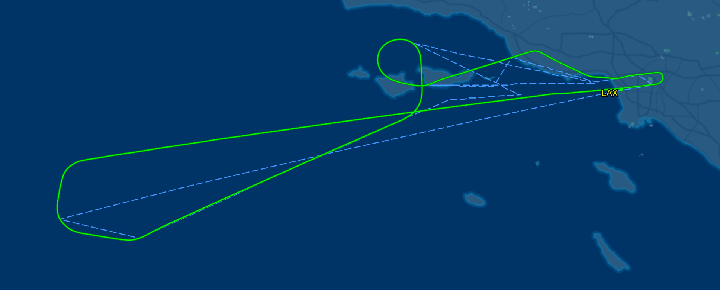
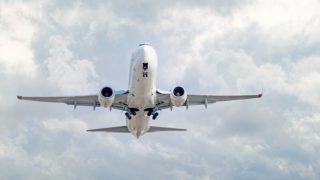

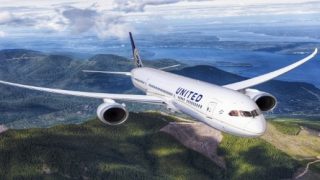
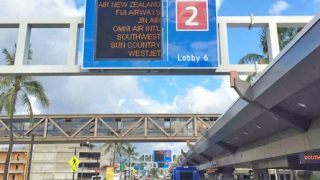
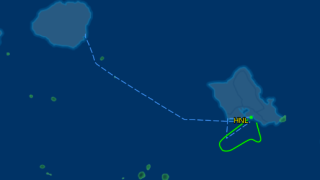

Hi BOH,
I’m not sure if you already saw the latest Hawaiian diversion that occurred last night for HA 82 (HNL-AUS). The aircraft circled due to weather in AUS and ultimately diverted to IAH where it then overnighted.
My mother is coming on in inbound HA 81 (AUS-HNL) and they didn’t leave AUS today until 7:15 p.m. CDT (scheduled departure was 9:20 a.m. CDT) since the aircraft wasn’t flown from IAH to AUS until 4:06 p.m. CDT. She said that no passengers came off the aircraft when it landed in AUS. I found myself wondering if Hawaiian bussed passengers overnight to AUS, despite having no staff at IAH since they don’t normally fly there.
Regards,
Will
It’s Amazing, I have just watched an air disaster on television that had a problem very similar to this. The commercial aircraft with 189 passengers and crew crashed with everyone aboard dying. Sometimes it can be the simplest of things that can cause the aircraft to fail.
I’ve been flying on Hawaiian Air for many years…I’ve always been a nervous flee but have just started relaxing and putting all the “what if’s” out of my mind. Now I am having anxiety regarding my flight to Hawaii in January with all these diversions.
I meant flyer not flea lol
My dad has be frightened of flying all his life. He was a sailor in the Navy. Now age 76 and lives in New York. He flies to Hawaii about every 8-10 years : graduation, wedding or special occasion.
Yes flying can be nerve Racking. But you must know ur facts. Getting on an airplane ✈️ is safer than crossing the street.
I am happy when any airlines: Hawaiian, southwest or United pull back in and I have a delay to check the plane out.
I trust the airlines industry with my life. They do a wonderful job of keeping everyone safe. They are risking their lives as well.
I was born, raised and still live in Hawaii. I love to travel.
Thank you all the employees of all the airlines industry.
You will be fine. You have a better chanceof something happening to you on the way to the airport than you do while on an aircraft. The systems built into aircraft have back ups for the back up. Even if one system fails, there are many other backup systems in place to ensure safe operation
The A330 mentioned in this article most likely could of been safely flown to Hawaii. However most pilots these day no longer know how to “fly” the aircraft. I remember one time we had an aircraft where the autopilot was on deferal. It did not affect the safety of flight nor was it a reason the flight could be grounded. We had one set of pilots who refused to take the aircraft mainly because they would of had to actually flown it. It’s pretty crazy when even a pot tells you that their job is so easy due to all the automation that a monkey could do their job
5.5 hours of hand flying in the flight levels, that’s an easy decision and this crew should be commended for their call. The words “most likely” and safety of flight don’t belong in the same sentence. Crossing the Pacific where a gross navigation error is a concern is not the time to be chuck yeagering a flying computer. What do I know though, I’m just a “pot”.
No you cannot fly an A330 across the Pacific without an auto pilot. It’s required to be working per the aircraft MEL (minimum equipment list)
A word about all the “diversions” here. Flying to Hawaii is incredibly safe. For many reasons but one is all aircraft have multiple back up systems for every significant component required for safe flight. If one fails or indicates a potential issue the crew is required to report it and if it’s important the decision to return for repairs is made rather then depend on the remaining system….3 hours away from land is no place to be depending on a back up system. Safety is the primary concern of any crew, it’s why flying is so safe today.
You should know that MEL list vary from airline to airline
Of course I do but no airline or anybody else is allowed to fly in RVSM airspace without an autopilot…it’s a basic requirement
Regardless of “knowing how to fly” I believe the air bus in question is a “fly by wire” aircraft with NO mechanical connections to the flight surfaces. If the “trim wheel” with no connection to anything useful once the circuit breaker is pulled to power off the “auto function”, I personally would put it on the ground as soon as I had off loaded enough fuel to get the MAX landing weight.
Fly by wire doesn’t mean the aircraft flight control systems operated are purely electric. To overcome the huge forces needed to deflect the rudder,the elevators,the trimmable horizontal stabilizer (THS), the ailerons, flaps and the slat and even the spoilers, hydraulic power is needed. The elevators also have electrically controlled hydraulic servojacks to deflect the surface. Same with the rudder, the ailerons and the spoilers.
I’m a former “over water” international airline pilot with thousands of hours of flight time acquired over 30+ years. Many of those hours were flown from the West Coast to Honolulu and beyond.
Sadly, yours is a completely misguided impression of what happens in the cockpit and what is required for the safety of flight or continued flight, if airborne.
You have evidently cemented in your mind way too many misconceptions to go into … I simply don’t have the time to explain it all.
Who are you referring to?
Well, it’s in the “tree” under your post … so I’ll give you one guess who it’s for … hope that helps.
ALOHA
You should also welcome in aircraft mechanic’s feedback as they have a better understanding of aircraft systems and components. The 2019 accident you reference occured on the unsafe 737 Max aircraft. The angle of attack sensor improperly said that the aircraft was climbing at too steep of an angle. Because the Boeing company cut corners and tried placing modern technology on an aircraft designed in the 1950’s, their answer was the MCAS system. The system that led to the crashes of both the Lion Air a d Air Ethiopia 737 Max aircraft.
Hi AMT.
The incident in South Africa was a 737-800, not MAX.
Aloha.
My Internet research all says the Air Ethiopia flight 802 that crashed on March 10, 2019 was a Boeing 737 MAX. A sample page containing the Seattle Times explanation is at:
seattletimes.com/business/boeing-aerospace/boeings-737-max-aircraft-and-the-crash-of-ethiopian-airlines-flight-302-explained-through-graphics/
(You don’t need to post this if you decide to delete your reply to AMT.)
Hi Paul.
That is not the flight to which we are referring.
Aloha.
When was that? I don’t usually follow crashes that occur outside of the US other than the two Max crashes
AMT (and Paul M), read the article Beat of Hawaii hyperlinked in red as “nosedive on a Boeing 737-800” in their original post. It was a September 2019 problem on a Mango Air Boeing 737-800 in South Africa. The issue on that plane sounds extremely similar to the one on the September 22, 2022 Hawaiian Airlines A330 – both were trim motor failure issues. There is no MCAS on either of those planes – it’s only on the Boeing 737-MAX.
Thank you for clarifying the incidents where MCAS planes were not involved.
What your article about these diversions doesn’t explain is why they are happening in such numbers and frequency. Have we discovered a ‘Hawaii triangle*!
Excellent video. Information like this would be especially beneficial to nervous flyers who would acquire a basic understanding of how avionics work. I’m surprised at the number of mechanical diversions that have occurred in the last month.
Mahalo.